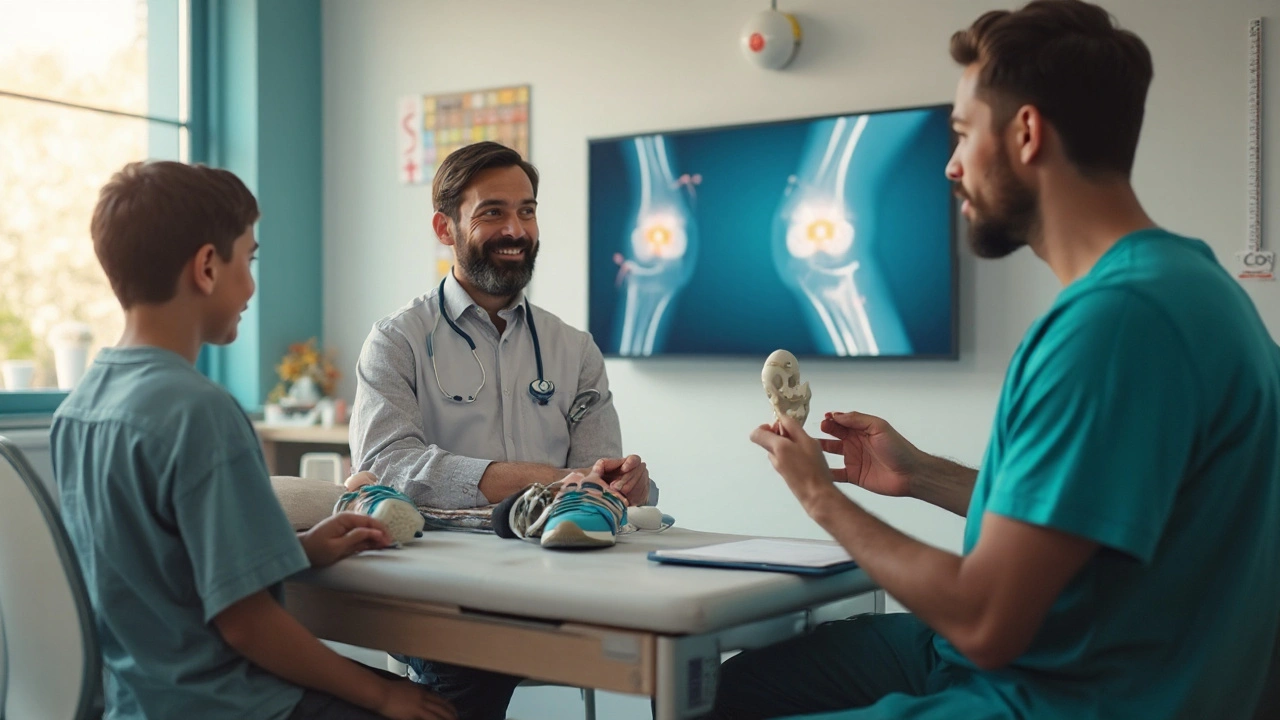Growth Plate Abnormalities: What You Need to Know
If your child’s height seems off or they’re limping more than usual, the growth plates might be involved. These tiny zones of cartilage at the ends of long bones are where new bone forms during childhood and adolescence. When something goes wrong—whether it’s an injury, a disease, or a genetic twist—the result is a growth plate abnormality.
First off, don’t panic. Most problems are caught early, and doctors have solid ways to fix them or at least keep things from getting worse. The key is spotting the signs fast and getting the right tests done.
Common Types of Growth Plate Problems
Fractures that cross the growth plate (Salter‑Harris fractures) happen when a break goes through the cartilage area. Depending on the grade, these injuries can slow bone growth or cause it to stop altogether in that spot.
Growth plate infections (osteomyelitis) are rare but serious. Bacteria invade the bone and cartilage, leading to pain, swelling, and fever. Prompt antibiotics and sometimes surgery are needed.
Genetic conditions such as achondroplasia or hypochondroplasia affect how the growth plate works, resulting in short stature or uneven limb lengths.
Hormonal issues, especially low levels of growth hormone or thyroid problems, can make the plates close too early. This often shows up as a sudden stop in height increase.
How They’re Diagnosed & Treated
The first step is a physical exam. Your doctor will check for uneven limbs, unusual angles, or pain that gets worse with activity. Imaging is the next big tool—X‑rays give a quick look at plate integrity, while MRI scans show soft tissue and early cartilage damage.
If an infection is suspected, blood tests for white‑cell count and C‑reactive protein help confirm it. Genetic testing may be ordered when a hereditary disorder is on the radar.
Treatment varies by cause. Simple fractures often need a cast or splint to keep the bone stable while it heals. More severe breaks might require pins or screws, but surgeons try to avoid crossing the plate whenever possible.
Infections demand antibiotics and sometimes surgical cleaning of the bone. Hormonal problems are treated with hormone replacement therapy under close monitoring.
For growth‑hormone deficiencies, daily injections can help the plates stay open longer, giving kids a chance to catch up on height. Physical therapy also plays a role—strengthening surrounding muscles reduces stress on the affected plate and improves mobility.
When the issue is a genetic condition, options are limited, but orthopedic surgery can correct severe limb‑length differences or angular deformities. Newer techniques like guided growth plates use tiny implants to steer bone growth in the right direction.
Bottom line: early detection, proper imaging, and a tailored treatment plan give the best shot at normal development. If you notice any of these red flags—persistent pain, uneven legs, or a sudden halt in height growth—talk to a pediatric orthopedist right away.
Staying informed helps you ask the right questions and feel confident about the care your child receives. Growth plates are powerful but fragile; with the right approach, most kids get back on track and keep growing healthy.
Osteodystrophy & Growth Plate Abnormalities in Children: Signs, Diagnosis, and Treatment
Clear guide to osteodystrophy and growth plate problems in children: what it is, signs to spot, tests doctors use, treatment options, and day-to-day support.

